This book provides a comprehensive account of what happened to the British Railways Class 14 0-6-0 diesel-hydraulic locomotives that were sold after withdrawal by British Rail for further use in industry.
Published in June 2022, this book from publisher Pen & Sword and written by Anthony P. Sayer, this book is part of Pen & Sword‘s “Locomotive Portfolios, Diesel & Electric” series. The landscape format hardback book measures around 26.67 cm x 25.4 cm, has 296 pages, and 150 colour and black and white illustrations and maps. It has a published price of £30 although at the time of writing it can be obtained from Amazon for £21.48.
Of the 56 Class 14s that were constructed in 1964/65, 48 of them went on to provide valuable service for many years after their withdrawal from BR in 1968/69. This is the author’s fifth book in the “Locomotive Portfolio” series and continues the story of the Class 14s he told in BR Swindon Type 1 Class 14: Their Life on British Railways.
This volume has 12 chapters, with Chapter 1 describing how most of the class continued in service after their brief life with British Rail. Chapter 2 provides histories for each of the 48 locomotives that were purchased by industrial concerns, whilst chapters 3 to 8 describe their use within the National Coal Board’s Opencast Executive, Durham and Northumberland, and South Wales areas, Stewarts & Lloyds/British Steel Corporation, as well as other industrial users. Chapters 9 to 11 provide histories for those members of the class that were exported or found further life in preservation or industry.
The author has included excellent large-scale detailed maps showing the extent of operations that the locos covered in their industrial lives. He also provides a detailed description of their working life in those areas, including a list of locations where each engine worked, their liveries and dates of service, and at least one photograph of each individual loco.
Details of how the locos came to be built, their technical specifications, depot allocations, and withdrawal dates from British Rail are to be found in the author’s earlier book covering their life on British Railways.
As with previous volumes in this series, the author has clearly carried out extensive research, and his quotes from official archive records, such as those involving British Rail and industry representatives dealing with the purchase of the locos, are particularly interesting.
As is to be expected, every photograph in the book is of a Class 14, but they are never repetitive, and whilst some show locos in a run-down or even cannibalised condition, many of them against a backdrop of industry, they illustrate well their day to day working conditions.
There is a great contrast between some of the locations illustrated, such as very rural scenes around the British Steel Corporation’s works at Corby when compared with photographs around National Coal Board lines, which are inevitably much more industrial in nature.
After being sold into industry, the new owners often repainted the locos into their own livery, and usually gave them a new number. From the photos below, there is no doubting which company took on D9526 after it left British Rail, as shown by its repaint into Blue Circle Cement livery.
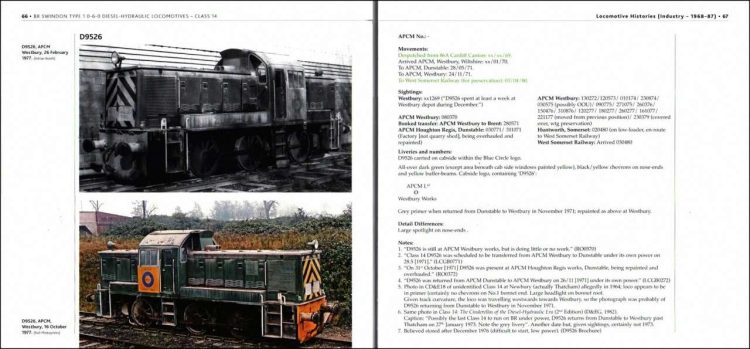
The left-hand page below highlights the extent of information included for each locomotive covered by the book, including their movements after purchase from British Rail, confirmed sighting of the locos, different liveries and numbers carried. The right-hand page confirms that industry looked after its locos, with the top photo showing former D9554 after its involvement in an accident, then fully restored to health in the bottom photo.
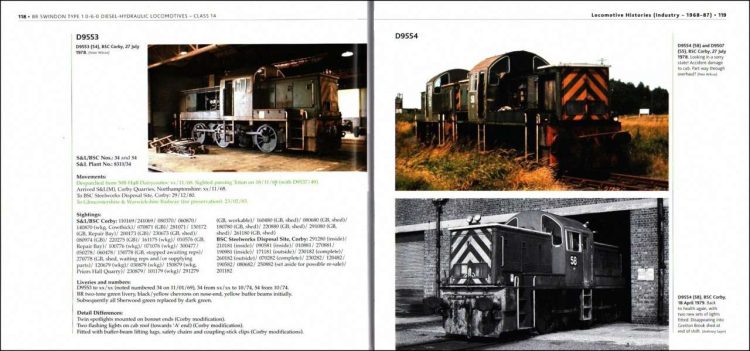
Within the National Coal Board’s Durham and Northumberland areas, there were a number of self-contained railway systems, such as the one at Burradon and Weetslade depicted in the map below.
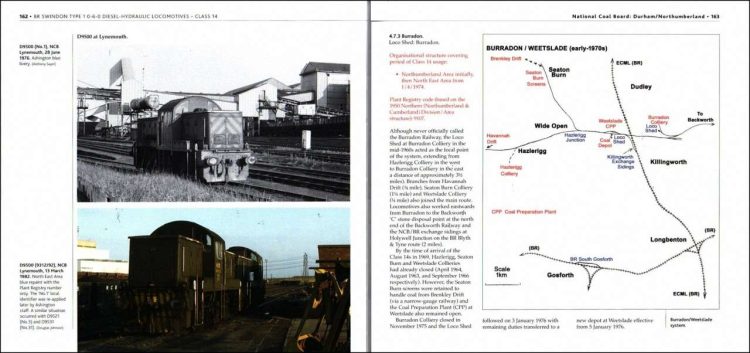
Just as locos on British Rail were gradually robbed for spares at the end of their working lives, so did those in industrial use as seen in the pages below.
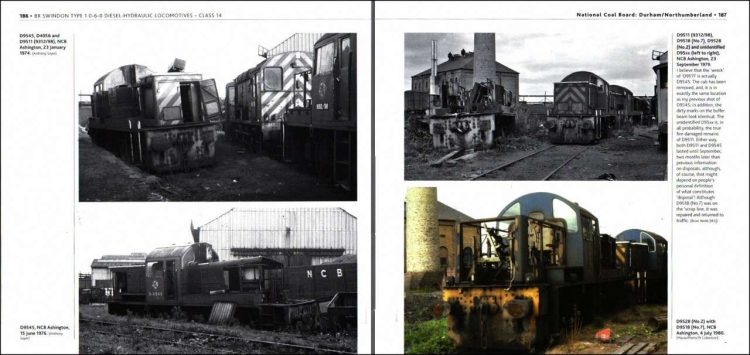
Only one Class 14 saw industrial use in South Wales, and that was D9530 which eked out its days at the National Coal Board’s Mardy Colliery, where it was eventually scrapped on-site in 1982. The pages below show at the top-right the loco at Ebbw Junction shed in Newport on one of its intermittent visits for repairs, while at the bottom it is seen dumped out of use at Mardy.
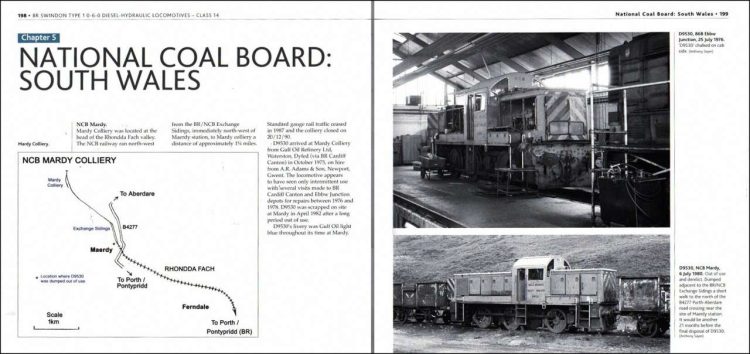
Five Class 14s were exported overseas, two to Belgium and three to Spain. The photo at the top-left below shows D9515 at Hunslet Engine Company in Leeds after being modified for use in Spain. Top-tight shows it onboard a ship at Goole Docks, and finally, the bottom photo shows D9515 in service in Madrid.
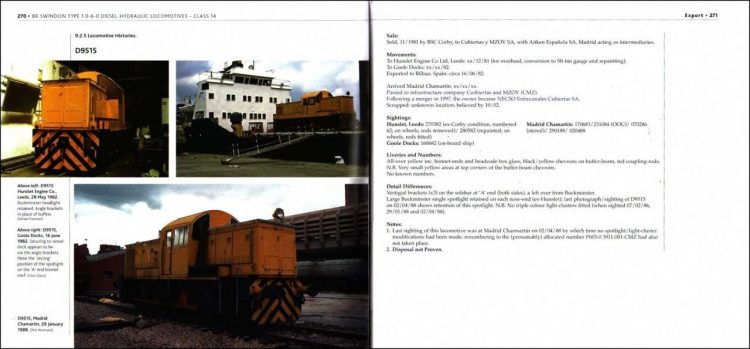
The book is available to purchase from Amazon and from Pen & Sword.
RailAdvent would like to thank Pen & Sword for providing RailAdvent with a copy of the book for review.






Responses
Thank you for your very kind review. The original intention was for a single book on the Class 14s to cover their whole history (excluding preservation) but such was the quantity and quality of information and photographic material obtained that the result would have been a 512 page monster! Pen & Sword suggested either an extensive curtailment or splitting the original book into two parts; I opted for the latter!